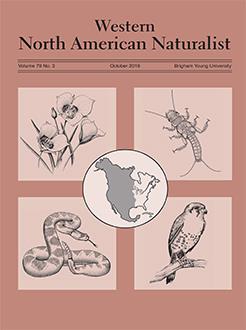In the western United States, significant environmental change is expected through the combined effects of climate change, tree mortality, drought, and invasive species. Wild animals can be used as indicators of threats to populations and even entire communities by looking for histopathological changes in their tissues. This method may identify threats to wild populations quickly and more accurately than waiting to observe population declines; however, baseline data are needed for comparisons. Here, rodents are surveyed at 5 sites in the Great Basin to record histopathological changes. Additionally, one site is next to a copper mine that was in operation for nearly 100 years. This site is compared to the other more pristine sites. Liver, lung, heart, and kidney tissues of 143 rodents from 10 species were processed and examined using standard histological methods. Thirty percent of rodents had histopathological changes. The most common histopathological changes were extramedullary hematopoiesis (11.9%), hyperplastic BALT (6.3%), and pyelitis (4.9%). Two pathogens were found: the nematode Capillaria hepatica (0.7%) and the fungus Emmonsia crescens (2.8%). The most common rodent captured, Peromyscus maniculatus (n = 116), was used to determine whether sex and mass predict histopathological changes. Body mass, not sex, was the best predictor, suggesting that heavier, older individuals should be selectively sampled if the goal is to assess potential threats to rodent populations. Data such as these can be compared to future data to assess populations and communities for effects of environmental change.
How to translate text using browser tools
10 September 2019
Histological Findings in Wild Rodents of the Great Basin
Andrew W. Bartlow
ACCESS THE FULL ARTICLE






